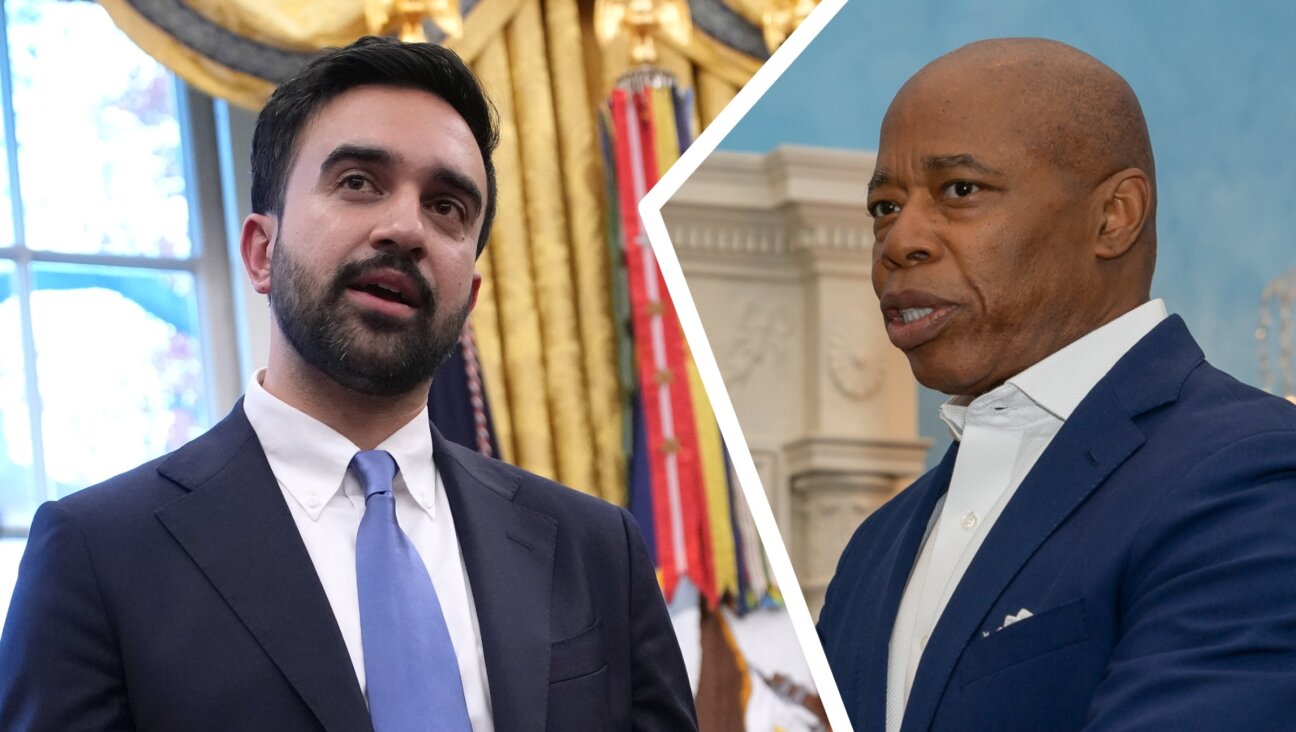Yiddish porn, Einstein’s letters and Rabbi Schneerson’s sermons united in ‘largest single remnant of Jewish life’ in Europe

Young boys from the Nieviaze kheyder posing in the courtyard of the synagogue in Kaunas, Lithuania, 1934. Courtesy of YIVO Institute of Jewish Research and Center for Jewish History
In 2014, Jonathan Brent discovered something he didn’t know he was missing.
Walking into the Wroblewski Library in Vilnius, he saw a long table covered with boxes. Inside were documents belonging to the organization he heads, YIVO, the Institute for Jewish research, which was founded in Vilna and moved its operations to New York in 1940, a year before the Nazi invasion of Lithuania, which saw the destruction of the old YIVO building and much of its holdings.
The Wroblewski Library had held onto the documents since 1948. Brent asked what the archivist was planning to do with them. They were waiting, she said, for YIVO.
Now, after over 80 years, as part of a seven year, $7 million international project in collaboration with the Wroblenski Library, Lithuanian Central State Archives and National Library of Lithuania, YIVO has reunited and preserved its prewar archives on an accessible online portal. The effort bridges a gap between the institute’s operations in the U.S. and its origins in Eastern Europe, recovering much of what was left behind just before the decimation of European Jewry and making it available digitally in one place.
The approximately 1.5 million pages in the Vilna collection include working drafts by Hasidic philosopher Martin Buber, letters from Albert Einstein to Yiddish writers and actors, a diary of young Theodor Herzl, business papers of the Rothschilds, songs, medical records and case files on families looking to convert to Russian Orthodoxy.
“We have Yiddish pornography, and we’ve gotten the sermons of Rabbi Schneerson,” Brent said. “That’s a people, that’s a civilization.”

A calendar from Warsaw, Poland, showing Jacob tending sheep and the emblems of the 12 Tribes of Israel. Courtesy of YIVO Institute of Jewish Research and Center for Jewish History
The Edward Blank YIVO Vilna Online Collections Project is the largest preservation effort in YIVO’s modern history and, Brent says, presents the “largest single remnant of Jewish life over a thousand years in Eastern Europe, Central Europe and Russia.” (Edward Blank is a member of the Forward’s board of directors and sponsor of our Bintel Brief podcast.)
“These documents, even though so many of them are fragmentary, or require exegesis in the context of a whole complex of other materials, each one of them is a piece in this huge puzzle,” Brent said. “And each one fills in a little bit of a gap in our knowledge not of the past, but of who we are.”
Stefanie Halpern, director of the YIVO archives, led a team of 11 conservators, archivists and digital processors, who personally handled 1 million documents in the New York headquarters and received, described and classified the roughly 400,000 artifacts processed by their Lithuanian counterparts.
The materials, much of which are in poor condition, were photographed in high resolution and grouped together in finding aids. Often the files coming from Vilnius, say, letters of Sholem Aleichem, completed a collection already in New York. (Attempts to have the objects in Lithuania return permanently to YIVO “got tangled up like a bowl of spaghetti in international courts,” Brent said, but prior to digitization artifacts in Vilnius were sent to New York for Xeroxing.)

A science not book from the Central Yiddish School Organization, active 1921 to circa 1940, in Poland. Courtesy of YIVO Institute of Jewish Research and Center for Jewish History

The cover of a youth autobiography written for a YIVO contest. Courtesy of YIVO Institute of Jewish Research and Center for Jewish History
Collectively, the artifacts paint a textured picture of Jewish life, from stodgy clerical papers to ephemera from a lively Yiddish theater scene.
“YIVO collected theater materials from all around the world,” Halpern said by way of example. “It includes thousands of posters that, for the most part, have not been seen because there are 30-by-40 posters that are extremely fragile that are in seven or eight or nine pieces.”
Now, on the portal, anyone with an internet connection can have a window into the Yiddish theater of Shanghai and Argentina. The materials, it should be noted, are not strictly Yiddish but Polish, Russian, French, Lithuanian, German and Serbo-Croatian as well, requiring many of the members of the young team to have familiarity with different languages.
“You need highly skilled and highly trained people and part of this project has been to develop and train the next generation of Jewish archivists to deal with our history,” said Brent.

The cover of a youth autobiography written for a YIVO contest. Courtesy of YIVO Institute of Jewish Research and Center for Jewish History
Delivering on deadline, despite two years of a pandemic, YIVO has refined a process that will serve it well for its next assignment: digitizing the archives of General Jewish Labour Bund, which has 3.5 million pages, more than twice as many as the Vilna online collection.
“We’ve got everything in place now to take on something of this magnitude,” said Halpern.

















